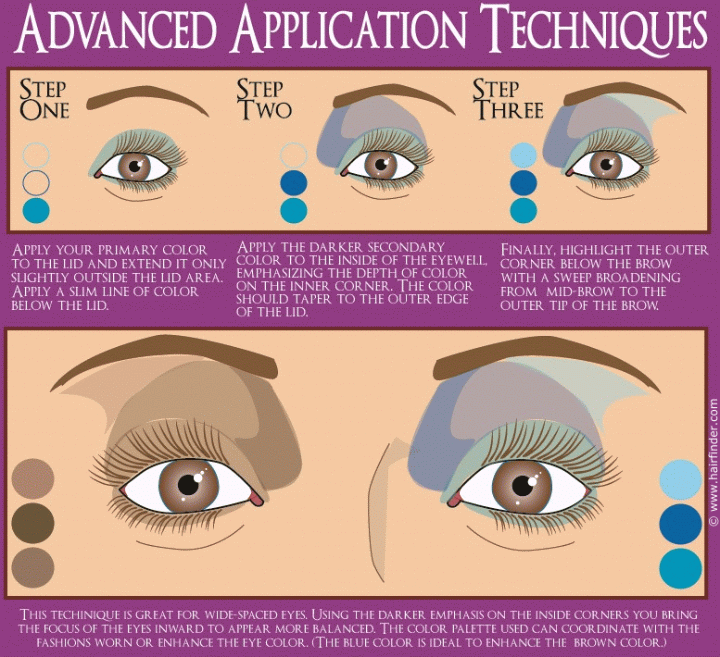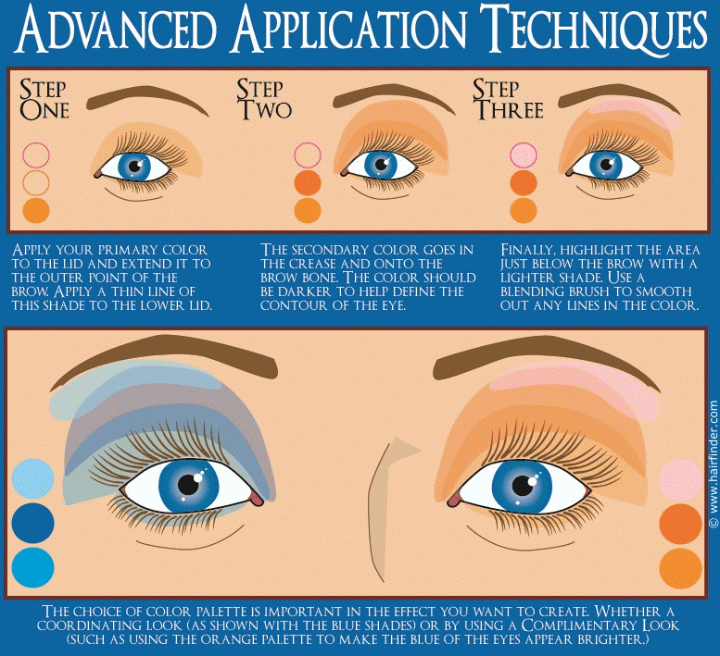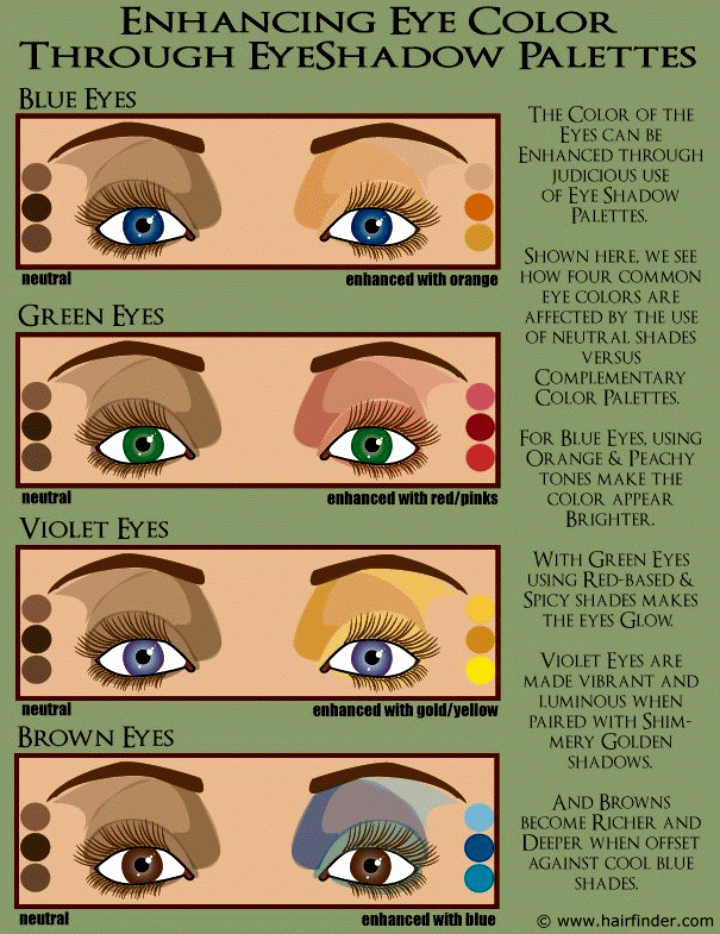Advanced Shading for the Eyes (2)

Previous page
Wide-Spaced Eyes
When your facial challenge is wide-set eyes, the goal is to minimize the appearance of that space between your eyes. This makes the lighter areas around the features appear more prominent and can give the illusion that the eyes are moved closer together.
Once again, this effect is created using a trio of eye color shades – one light, one dark, and one somewhere in between. As with other application techniques, you should begin by applying your middle shade to the upper lid of the eye, but in this case try to keep the eye color confined to the natural shape of the lid. Follow this by applying a slim line of the eye color to the lower lid, just beneath the line of the lashes.
Use your lightest shade to enhance the brow bone under the eyebrow on the outer corner of the eye. This will make the outside of the eye appear more prominent and help to create the illusion that the eyes have been “shifted” inward.
Choosing Color Palettes

The choice of your color palette for eye shadow is typically based on your general viewpoint as to the purpose of eye shadow. Some people consider eye shadow to be something of a fashion accessory, and will use colors to compliment an outfit or tie a look together. Others look to eye shadow as a means to enhance to overall appearance. The outfit worn certainly influences the hues that are selected, but it isn’t the sole consideration.
When selecting an eye shadow palette, another benefit that can be achieved from the choice of color palettes is the enhancement of the natural eye color. Anyone who’s done any study of color theory understands the principle of “Complementary Colors”. A color is “complemented” by the color directly opposite it on the color wheel. “Complemented” means that the color is “completed” and it refers to the fact that combining these colors (a primary color with a secondary color) represents all the colors of the wheel combined.
Therefore the primary colors of Red, Blue and Yellow are complemented by Green, Orange and Purple. When a color is paired with its complement, they appear sharper and brighter. This can be a benefit when the theory is applied to eye shadow application. Choosing the right color palette for your eye shadow can help you maximize the impact of your eyes.

Blue Eyes are best enhanced by shades of color that are Orange or Peachy in tone. Be sure to adjust your color choices for the shade of blue in your eyes. The darker the blue of your eyes the more rich the corresponding Oranges and Peaches should be.
With Green Eyes, the color best suited is Red. Admittedly, red is a less-common eye shadow color, but by choosing red-toned and “spicy” shades you can make the green appear more vivid and lush.
For Violet Eyes, use soft golden tones and yellows with some shimmer in order to make the eyes appear luminous and to make the color pop.
Finally, the most common eye color is Brown, which is given tremendous amounts of warmth and vibrancy when accentuated with the cool tones of the blue palette.
©Hairfinder.com
See also: More about make-up application